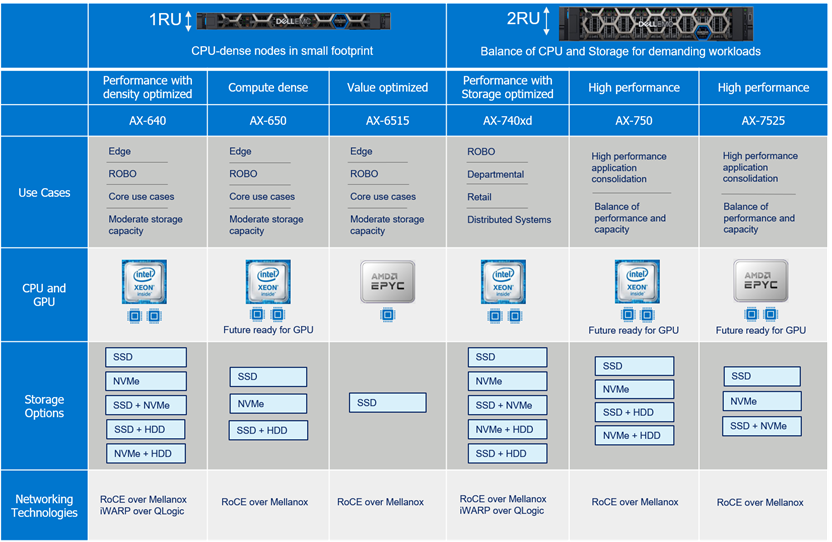This design guide outlines the components, architecture, and best practices of an Azure Virtual Desktop on Azure Stack HCI deployment on Dell AX nodes. It outlines the software and hardware components of the solution and how these components fit together and interact. At the time of writing this document, Azure Virtual Desktop on Azure Stack HCI was in public preview.
Azure Virtual Desktop on Azure Stack HCI offers many benefits to customers. One of the main benefits is extending the Azure cloud to on-premises infrastructure. Customers who liked Azure Virtual Desktop (formerly Windows Virtual Desktop) liked the solution, but wanted to have complete control of their corporate data by hosting and maintaining it in their data centers.
Azure Virtual Desktop lets customers manage all the VMs in the on-premises data center using the Azure cloud portal. This means customers can join on-premises VMs to host pools managed from the Azure Virtual Desktop portal in the cloud. Benefits for customers of hosting data on their on-premises infrastructure include:
- Data locality: To run low-latency applications providing a better performance for VDI desktops when compared to VDI desktops hosted in a public cloud.
- Data regulatory compliance: More companies want data to be on-premises due to data regulatory compliance.
Other benefits offered by this solution include:
- A fully productized HCI solution with foundational AX nodes, network switches, support and deployment services with a high-performance architecture that uses technologies such as 25/100 Gb RDMA networking and all-flash storage.
- Single pane of glass admin experience with a hybrid Azure Virtual Desktop solution. It offers a unified management experience for public cloud and on-premises deployments from the Azure portal.
- Integrated life cycle management, including automated cluster creation, 1-click full-stack Cluster-Aware Updating, cluster expansion, and CPU core management using Dell EMC OpenManage Integration with Windows Admin Center.
- Azure Virtual Desktop on Azure Stack HCI presents the only on-premises mechanism to provide the cost advantages of multiuser Windows 10/11.
- The solution provides seamless integration with Microsoft 365 and Teams.
- End-users can access their designated virtual desktop from anywhere and from any enabled client that is connected to the Internet. The VDI desktop can be accessed by login credentials and a browser or remote desktop application.
Dell Technologies offers multiple configuration options of hardware that have been validated and guaranteed to deliver the optimal balance of performance and capacity to address a broad set of Azure Stack HCI use cases and workloads.
The following figure shows the AX node hardware:

